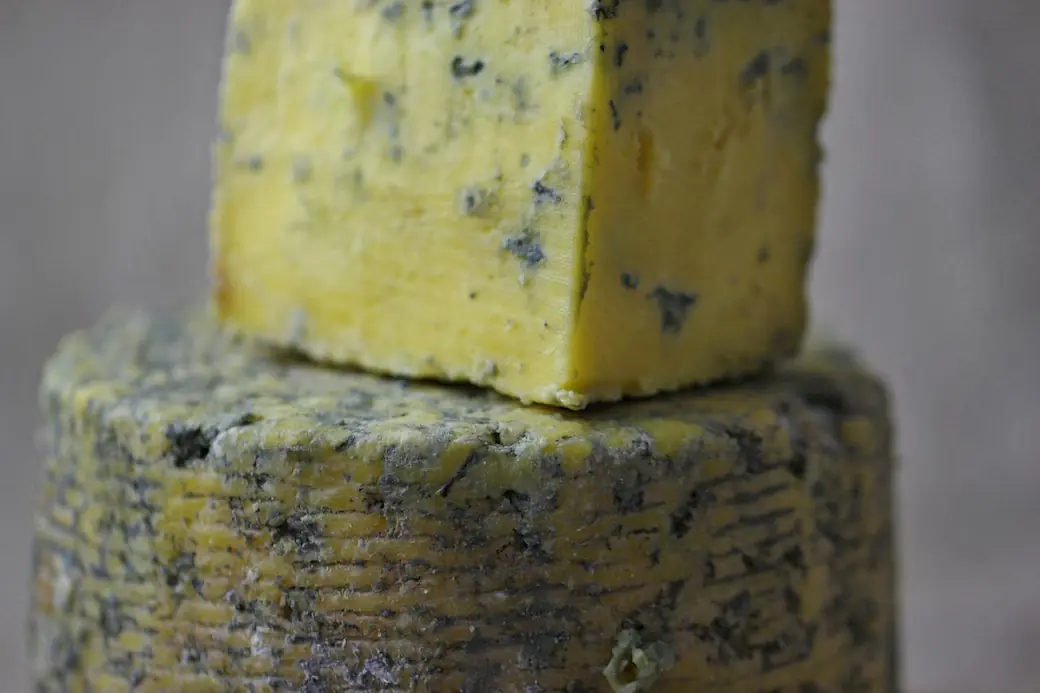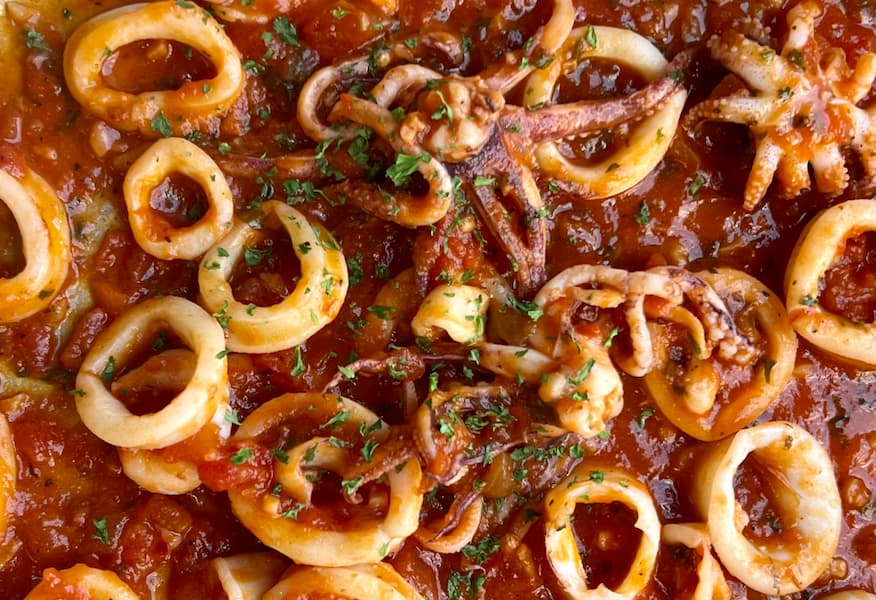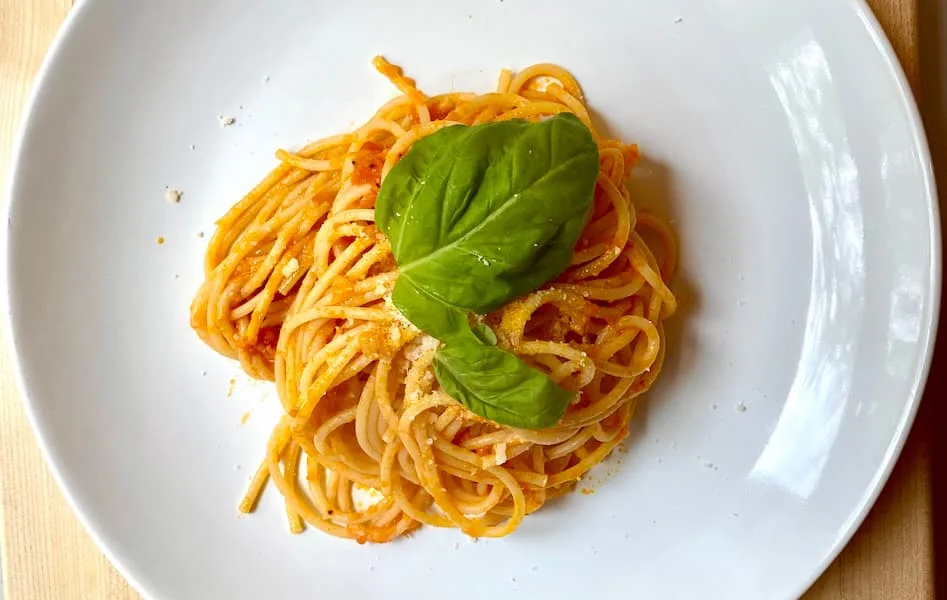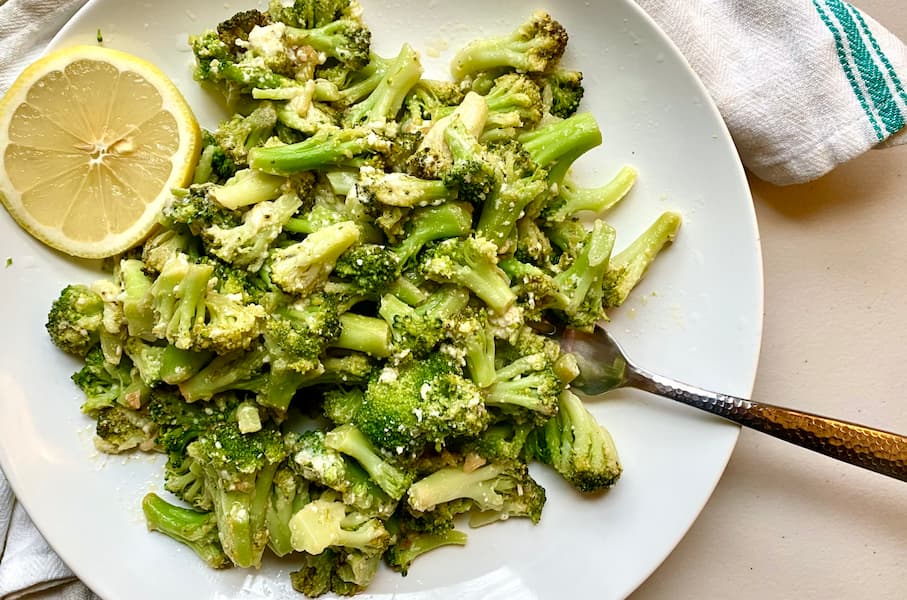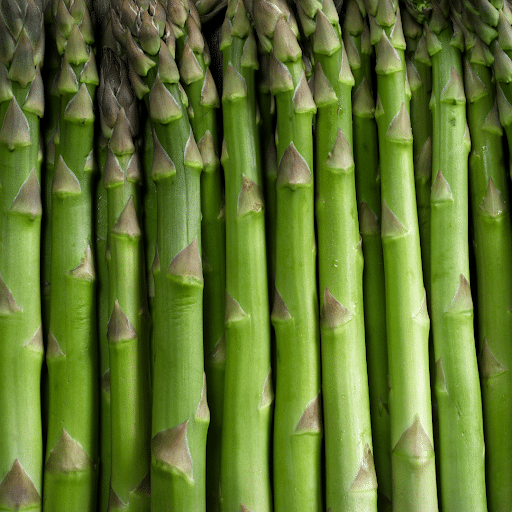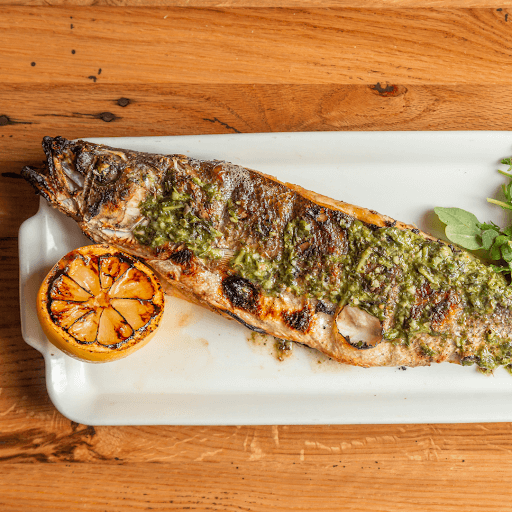What’s the difference between blue cheese and gorgonzola? That’s not an easy question to answer.
Let me start by saying that gorgonzola cheese IS a blue cheese. It’s one of the many varieties produced in the world. I’m about to give you a quick lesson.
How Blue Cheese Is Made
And when I say “blue cheese” I’m talking about gorgonzola too.
There are many different types of blue cheese on the market. The main difference between them is the type of milk used and the different flavors. But there is something they all have in common.
We all know what makes blue cheese blue…right? This fact is usually what makes people either love or hate blue cheese. It’s the mold.
The blue veins in these types of cheese are created by mold. You’re probably wondering why it’s ok to eat blue cheese when you’ve always been taught to throw away moldy food.
The mold present in blue cheese isn’t bad for you. It’s called penicillium and it’s from the same family of spores used to make penicillin. These mold spores do not produce toxins and therefore are not dangerous.
However, they do create interesting flavors in the cheese that lots of people find delicious.
There are 2 basic types of mold used to make blue cheese. One is called penicillium glaucum mold and the other is penicillium roqueforti. Each mold has a distinctive flavor that it adds to cheese.
In order to make a cheese turn into a blue cheese, the mold needs to be inserted. There is some science to this whole process that must be admired.
In order to create the different flavors that blue cheese gives off, the mold needs to grow. And in order for the mold to grow, it needs air. So after the wheel of cheese is formed, metal rods are inserted into it. This allows oxygen to circulate and assists in the mold growth.

Main Varieties of Blue Cheese
You probably figured out that one of the differences between gorgonzola and other blue cheeses is the type of penicillium used.
Penicillium glaucum is mainly used for cheeses such as Bleu de Gex, Rochebaron and some varieties of Bleu d’Auvergne.
Penicillium roqueforti, on the other hand, is used to produce many types of internationally famous blue cheeses, including gorgonzola. Let’s look at some of them.
Stilton

Everyone has heard of the famous British Stilton blue cheese. This English cheese is made in a part of England called the Midlands. In order to be an official Stilton cheese it must be produced in Derbyshire, Leicestershire or Nottinghamshire. However, it’s named after the village of Stilton which is in Cambridgeshire.
There are three types of Stilton cheese. There is Blue Stilton, White Stilton and Vintage Blue Stilton. These are all semi-soft cheeses and are known for a milder flavor.
The blue veins in Blue Stilton are created from penicillium roqueforti.
Roquefort

This cheese is from southern France, more precisely from the town Roquefort. There is a legend that says blue cheese was discovered there.
The story goes something like this. There was a shepherd who left his lunch in a cave to chase after some girl. It was bread and some cheese curd. When he came back the cheese was moldy, but this savage shepherd decided to eat it anyway.
They say he liked it so much that he tried to replicate it himself. And that’s how blue cheese was born!
Is it true? Who knows.
There’s also another cool story about this cheese. Supposedly King Charlemagne tried it while traveling through the countryside on a military campaign. He loved it so much he had 2 boxes of it per year delivered to his castle in Aachen.
Is this story true? Maybe.
But what I do know is that Roquefort cheese is really good.
The way Roquefort is made is pretty strict. It can only be made from sheep’s milk. The sheep have to be Lacaune sheep which are found in Southern France. There are approximately 800,000 of these sheep in the area making milk for the cheese. That sounds like a lot of cheese to me.
The cheese also has to be aged in the natural caves of Roquefort-sur-Soulzon. These caves have natural ventilation which helps with the development of the penicillium roqueforti.
Roquefort cheese has a firm texture. It’s known as a crumbly blue cheese, but is not brittle.
Danablu

Danablu is a Danish blue cheese made from cow’s milk.
The interesting thing about this cheese is that it doesn’t have a rind like other blue cheeses. The coloring of the cheese can range from white to shades of yellow or light brown.
Blue-green veins run throughout the cheese, created by penicillium roqueforti.
This cheese has a texture that is soft and sometimes considered buttery. The flavor is sharp and sometimes finishes with a sharp aftertaste.
Gorgonzola cheese

Finally, Gorgonzola cheese comes from Northern Italy.
It is produced mainly in the Piedmont and Lombardy regions. There is a legend that it originated in the Italian town of Gorgonzola, near Milan, but that has been disputed over the years.
Gorgonzola is made from unskimmed cow milk.
The process involves forming wheels of cheese and inserting metal rods through them to allow for air circulation. The mold in Gorgonzola is known to create longer blue-green veins throughout the cheese as opposed to spots of blue mold that is present in many other types of cheese.
There are two types of Gorgonzola cheese.
Gorgonzola dolce is a soft, creamy cheese with a yellow tint. Some say the texture is buttery. The flavor is mild and sweet.
Gorgonzola piccante, on the other hand, is a harder cheese with more blue-green veins. Its flavors and aroma are sharp and strong.
I love a good Italian cheese and this is one of them. Gorgonzola is great at room temperature, after a meal, with fruit.
At Mortadella Head, we go through a lot of gorgonzola in the kitchen. Its strong flavor and pungent smell is perfect on so many of our pizzas and salads. A lot of people love our Prosciutto and Pear Pizza and our Pig and Fig sub because of the gorgonzola. It’s definitely one of the favorite ingredients in our kitchen.
Speaking of that…

How to use Blue Cheese and Gorgonzola
Aside from our pizzas and subs, there are many different ways to enjoy blue/gorgonzola cheese. Here is a few you can try out.
Appetizers: take some croutons, place a bit of gorgonzola and a nut on top of each, and finish with a drizzle of honey.
Alternatively, serve the gorgonzola on a cheese board along with nuts, dried fruit and honey. If you have other types of cheese, add those as well and turn the whole thing into a degustation.
Meat: make a burger and top it with blue cheese and bbq sauce. This is perfect for every occasion, wether you’re grilling with family and friends in your backyard, or sitting in your house late at night and wanting to reheat some frozen burgers.
Salad: take a simple mixed green salad, and crumble some hard blue cheese on top of it.
Needless to say, each of the cheeses we have seen so far is used in recipes that are typical of the places where it is produced.
Gorgonzola, for example, is used to make gnoch di mùrador (“mason’s gnocchi”), which are gnocchi seasoned with butter, gorgonzola and parsley, and appears in some of Piedmont’s local polentas.

Blue Cheese vs Gorgonzola: Recap
Thus, there are many types of blue cheese that differ in which penicillium is used to produce them. Others differ in the types of milk required.
Gorgonzola is a type of blue cheese made from penicillium roqueforti and cow’s milk, and differs from other similar varieties by:
- its place of origin;
- its blue-green veins, which are usually longer than in other cheeses;
- the traditional recipes in which it is used;
- its flavor, which can be mild, sweet, and creamy (mild gorgonzola), or sharp and strong (sharp gorgonzola).
I hope you enjoyed learning about all the types of blue cheese around. Now, which is your favorite?

